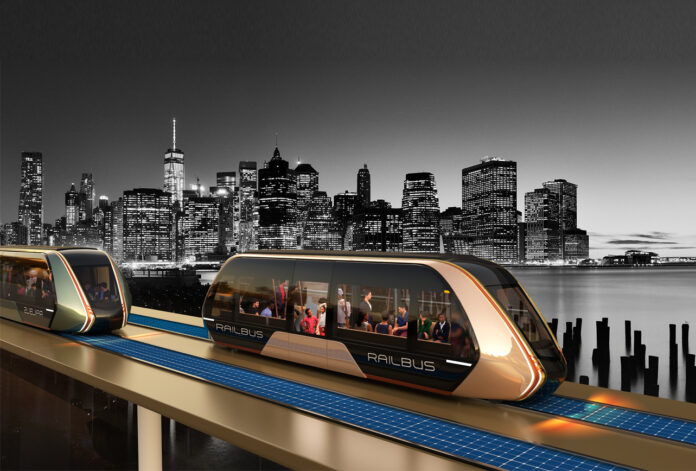Transportation has always been an essential part of urban development and city planning. As cities continue to grow rapidly with rising populations, existing transportation infrastructures face increasing pressures which lead to traffic congestion, pollution, and compromising people’s quality of life. There is a pressing need for sustainable and innovative transportation solutions that can meet the demands of modern urban centers while reducing their environmental impact.
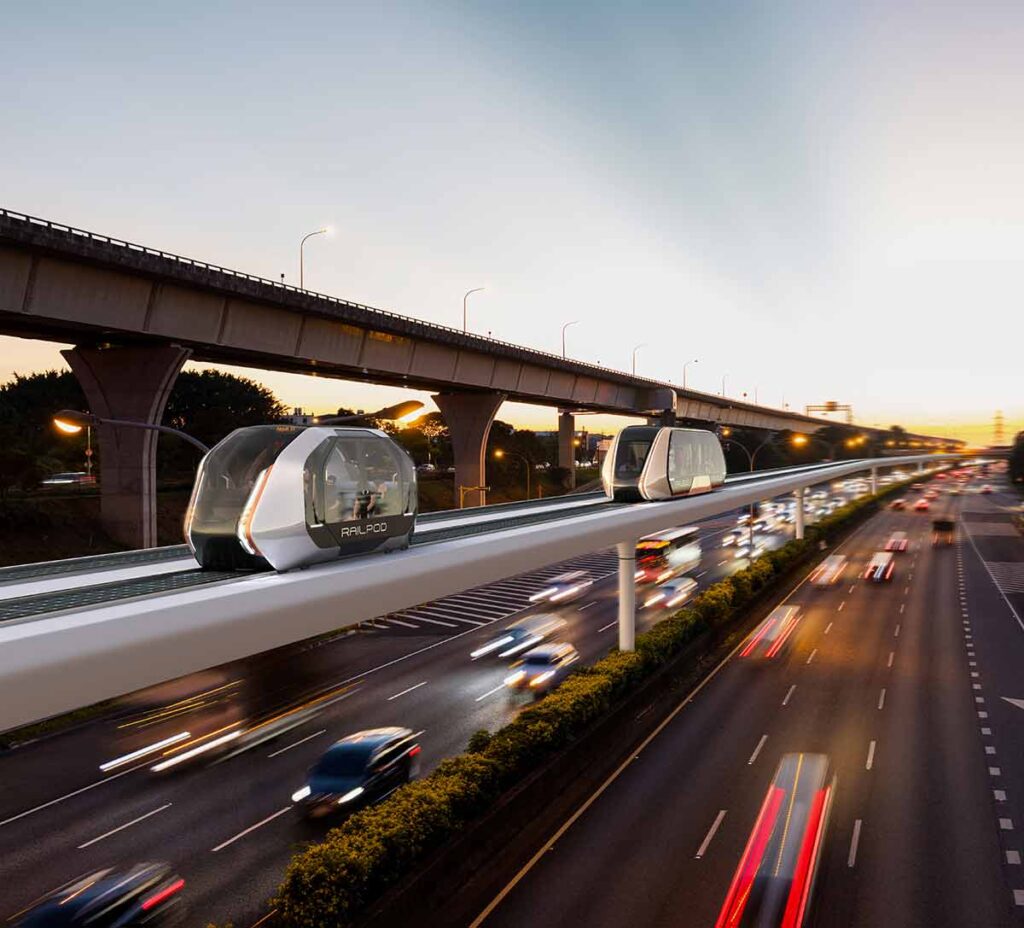
Imagine a world where your daily commute is not only efficient but also environmentally friendly and surprisingly affordable. That’s precisely what RAILBUS aims to achieve with its revolutionary approach to mass transit. This visionary system is pioneering sustainable, affordable, and innovative urban transit solutions for cities worldwide.
At the heart of the RAILBUS concept lies a bold commitment to combating the challenges of congestion, pollution, and accessibility that plague many urban areas. By harnessing the power of cutting-edge technology and a forward-thinking design, RAILBUS is poised to reshape the way we navigate our cities, one commute at a time.
Introducing RAILBUS
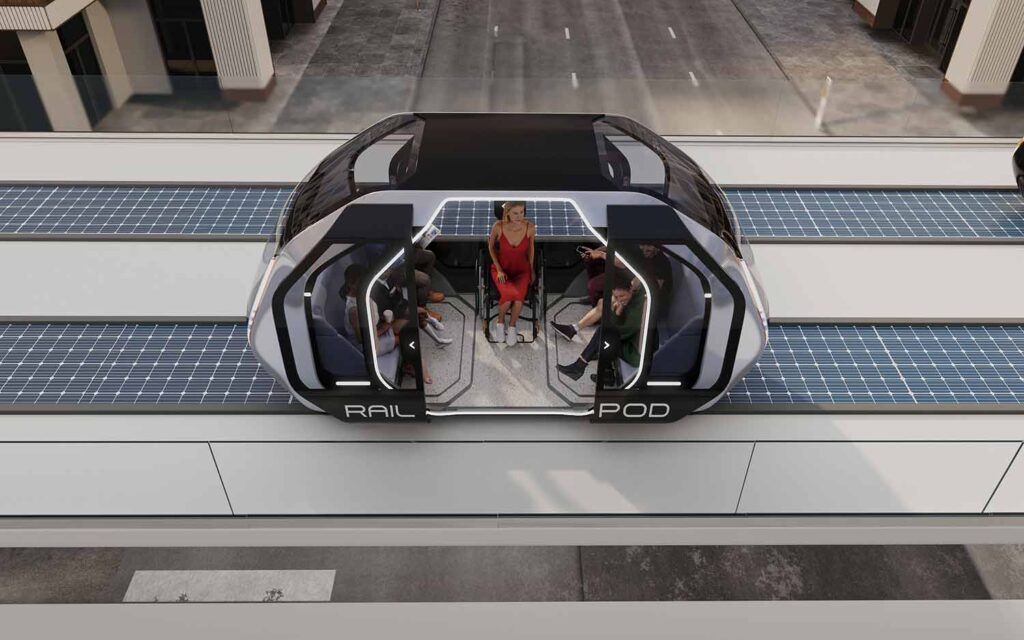
RAILBUS is a pioneer in the green mass transportation sector developing an elevated guideway system using solar-powered vehicles running on lightweight non-corrosive composite tracks. Based in Delaware, United States with offices in Dubai, RAILBUS aims to transform outdated metro, bus, or road-based systems into an ultra-modern emission-free network. RAILBUS has reimagined public transportation from scratch focusing on sustainability, affordability, reliability, and efficiency through its modular construction approach and optimized route planning.
“RAILBUS can literally transform every city in the world and promote economic growth in developing nations, as well as in leading countries.” – RAILBUS
Advanced Key Features of RAILBUS System
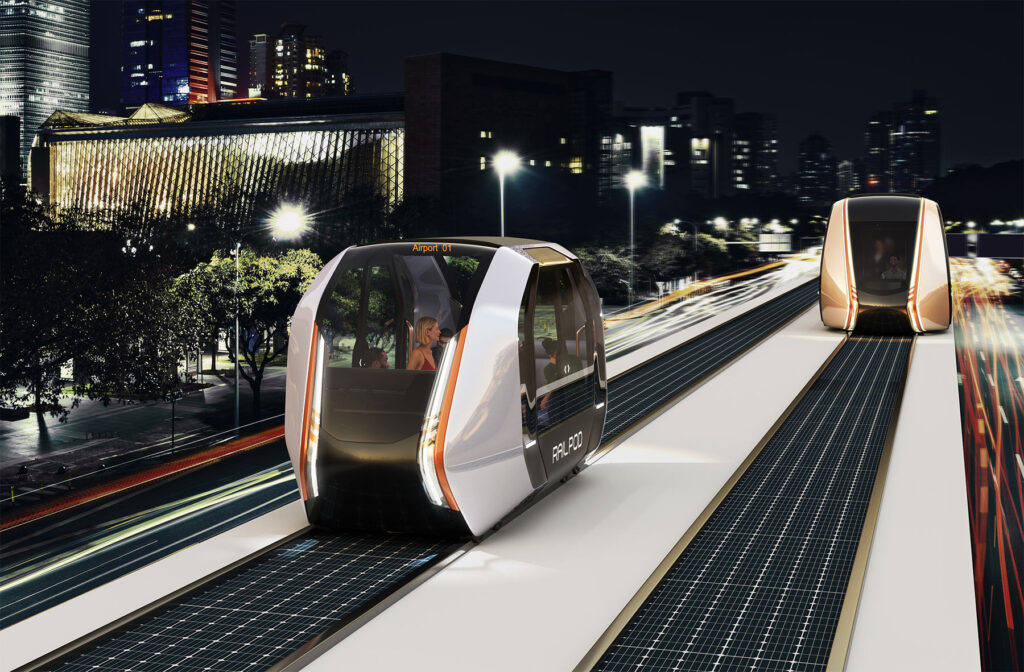
Lightweight and Cost-effective Design
RAILBUS tracks are made from ultra-light non-corrosive composite materials which reduces the infrastructure cost to less than 20% of conventional metro networks. Individual track sections can be fabricated off-site and assembled rapidly on location bringing down construction timelines and expenses.
Solar-powered Vehicles
RAILBUS vehicles are fully electric and powered by solar panels installed on the rooftops. This pioneering approach eliminates operating costs of fuel and minimizes environmental impact with zero direct emissions.
Elevated Guideway Network
By elevating the entire network on concrete or steel beams, RAILBUS ensures no disruption to road traffic and provides a congestion-free travel experience to commuters.
Simultaneous Boarding & Alighting
RAILBUS stations are equipped for simultaneous boarding and alighting through its “berth concept” allowing faster passenger throughput and continuous train movement.
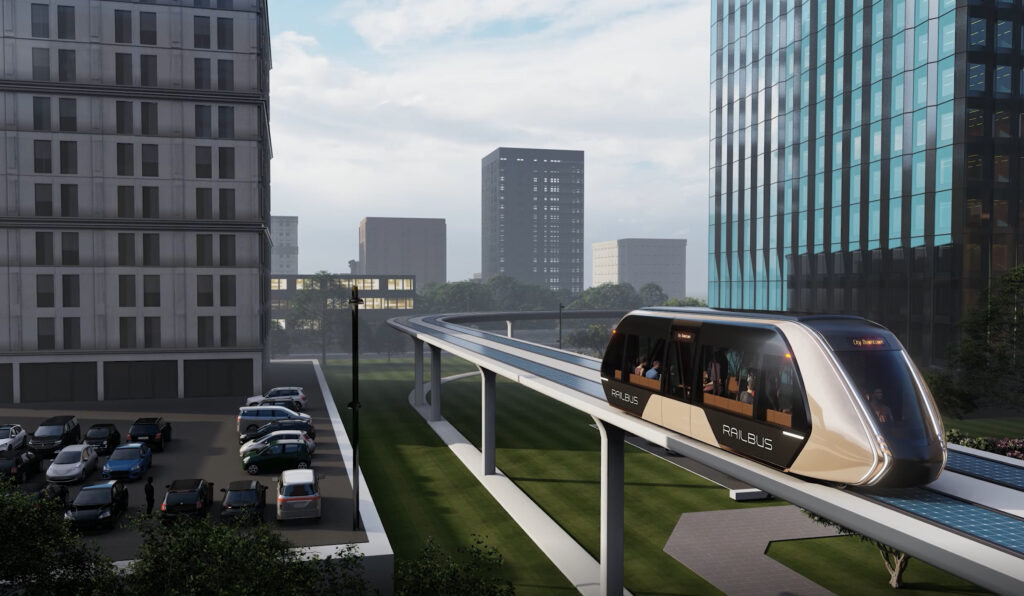
On-demand Route Planning
The dynamic routing system adapts routes based on current passenger demand patterns for optimized transport efficiency.
Some other notable features include zero waiting time, 98% energy recovery through regenerative braking, automatic vehicle monitoring for real-time performance tracking, and modular expansion capability.
RAILBUS Track System
One of the most impressive aspects of RAILBUS is its innovative track system underpinning the entire network. As mentioned earlier, the use of ultra-light composite materials for tracks brings the infrastructure cost down significantly. According to RAILBUS, individual track sections weighting 1/10th of conventional steel rails can be mass produced and quickly installed.
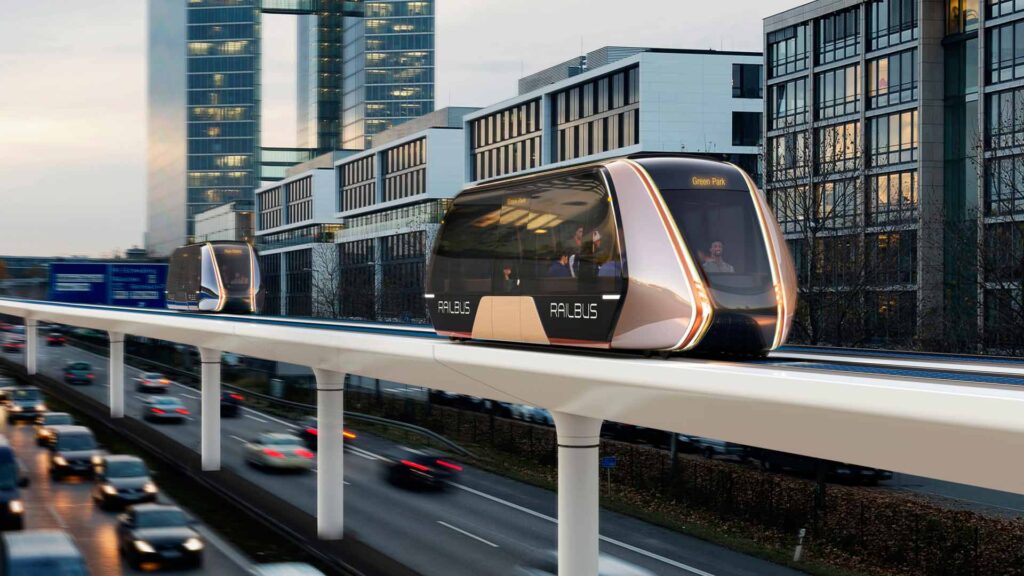
Key advantages of RAILBUS tracks
1. Lightweight – Weighing only 15kg/m, composite tracks are much lighter than traditional steel rails reducing construction material requirements.
2. Cost Effectiveness – Lower material and production costs coupled with simplified installation process deliver greater cost savings.
3. Non-corrosive – Composite material is highly durable and resistant to corrosion from environmental factors like weather or pollution.
4. Flexibility – Tracks can be fabricated in various radii to navigate tight curves and accommodate diverse terrains.
5. Maintenance-free – The absence of any mechanical parts translates to negligible maintenance and longer service life.
6. Simplicity – Track intersections are designed for vehicles to seamlessly switch lanes with outstanding smoothness.
Overall, the innovative track system serves as the backbone of RAILBUS enabling it to transform transportation through its lightweight, durable, and affordable infrastructure.
Accessible and Inclusive Design
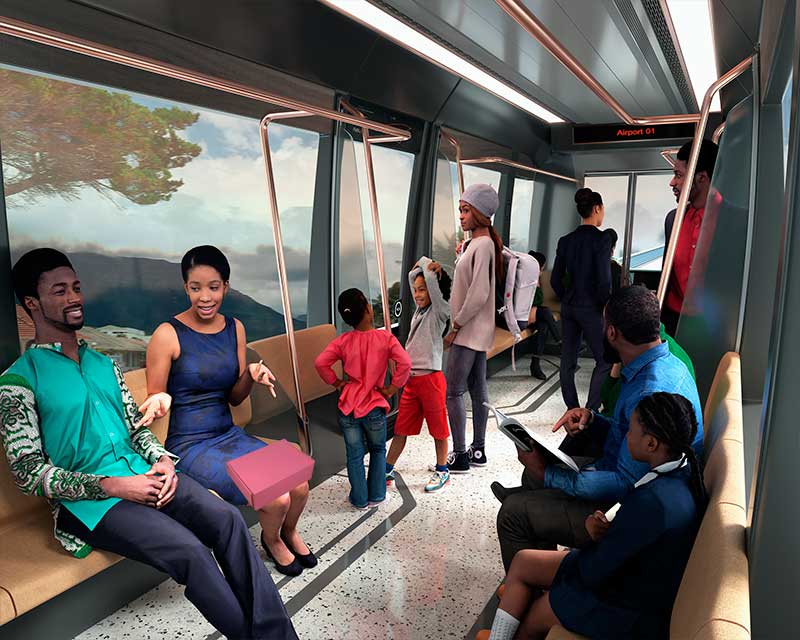
RAILBUS has also placed a strong emphasis on accessibility and inclusivity in its station design. All stations are elevated and equipped with lifts, ensuring that the system is easily accessible for passengers with disabilities or limited mobility. The stations are designed with a focus on simplicity, contemporary aesthetics, and the use of eco-friendly materials, creating a visually appealing and welcoming environment for all users.
Moreover, the strategic placement of RAILBUS stations at intervals of 2-3 km ensures that passengers have convenient access to the system, reducing the need for additional modes of transportation to reach the stations. This commitment to accessibility and integration with the urban landscape is a key factor in making RAILBUS a truly inclusive solution for cities.
Economic and Environmental Benefits
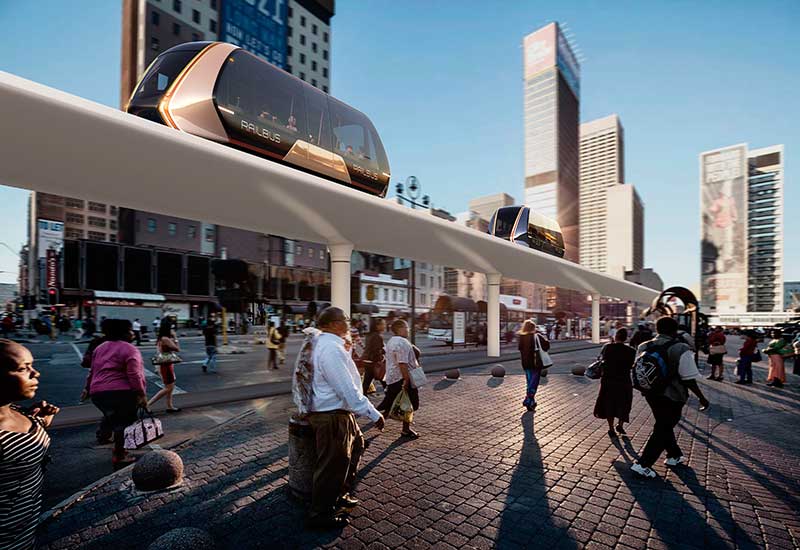
The transformative impact of RAILBUS extends beyond just improved urban mobility. The introduction of RAILBUS stations has been shown to have a positive effect on the local economy and property values. The vicinity of these stations becomes an attractive hub for businesses, with opportunities for the establishment of quick-service shops and other commercial enterprises that cater to the needs of commuters.
“RAILBUS system offers a greater overall return on investment at local level than other forms of integrated transport, such as Metro, Monorails or trams.” – RAILBUS
In addition to the economic benefits, RAILBUS is at the forefront of the global effort to reduce carbon emissions and combat climate change. By providing a fully electric, solar-powered mass transit system, RAILBUS is actively contributing to the reduction of greenhouse gas emissions and promoting sustainable urban development. This aligns with the company’s core values and objectives, which are centered around environmental responsibility and creating a better future for both the planet and its people.
Gaining Traction Worldwide

The innovative and sustainable nature of RAILBUS has not gone unnoticed. The company has already gained significant interest from government officials and strategic partners around the world, particularly in the Middle East, Asia, and Africa – regions where the demand for affordable and efficient mass transportation systems is especially high.
“Cities throughout Middle East, Asia and Africa are already excited to integrate RAILBUS into their transportation system.” – RAILBUS
In a testament to its recognition within the industry, RAILBUS has obtained membership in the International Union of Public Transport (UITP), a prestigious organization that represents public transport stakeholders globally. This achievement speaks to the company’s commitment to developing a system that is a major addition and a qualitative shift in public transportation.
Transforming Transportation Globally

With its breakthrough innovations, RAILBUS has the potential to revolutionize public transportation systems of cities worldwide. Some important factors contributing to its growing popularity include:
- Affordability: Lowest cost per km to build than any other mode, with high return on investment.
- Modularity: System can be retrofitted with high flexibility to any urban environment seamlessly.
- Sustainability: Fully electric vehicles powered by renewable solar and a focus on reducing carbon footprint makes it an exemplary green solution.
- Reliability: The proven durability of ultra-light composite materials and the absence of mechanical parts ensure reliability.
- Efficiency: Optimized simultaneous boarding/alighting, dynamic routing, and high frequency improve transport productivity.
- Accessibility: Grade-separated network and provision of lifts at all stations enhance accessibility for all.
It is evident from growing RAILBUS interest among people and increasing MoUs with various government bodies that this sustainable mobility provider is poised to transform congested cities worldwide with its future-proof elevated rail system. The inclusion of Dubai’s Roads and Transport Authority as a strategic partner is a testimony of RAILBUS’ growing legitimacy.
The Road Ahead
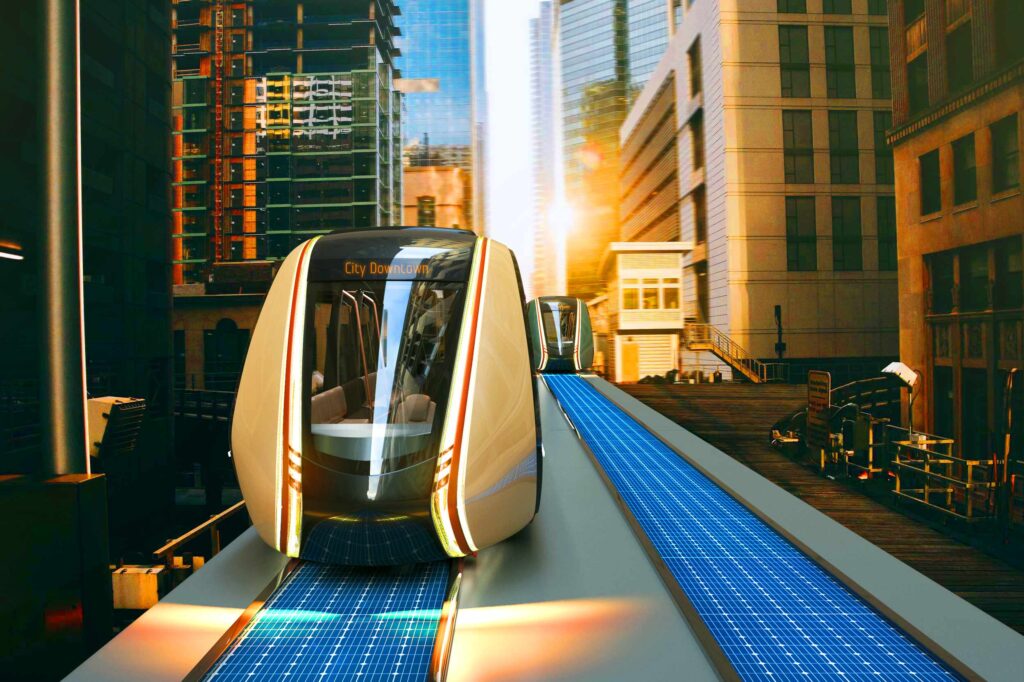
As RAILBUS continues to gain momentum and attention, the company is poised to play a pivotal role in shaping the future of urban transportation. With its unwavering focus on sustainability, accessibility, and cost-effectiveness, RAILBUS is positioned to become a game-changer in the industry, transforming the way people move within and between cities.
The future of urban mobility is undoubtedly bright, and RAILBUS is at the forefront of this transformative movement. By leveraging cutting-edge technology, innovative design, and a deep commitment to environmental responsibility, RAILBUS is redefining the way we think about public transportation and paving the way for a more sustainable and inclusive urban future.
